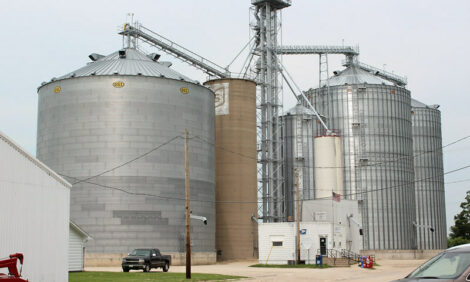



Safety Hazards Faced During Manure Pumping
US - News reports surfaced last fall detailing flash fires and explosions in livestock buildings while liquid pit manure was being agitated and pumped.For this reason, University of Illinois Extension staff are urging caution when agitating and pumping manure from pits beneath buildings. So far, this phenomenon has occurred mainly in pits under swine buildings that have foam above the manure in the pit.
"While not all pits are experiencing foaming issues, several Midwestern livestock producers have reported their liquid manure pits developed a layer of foam from 1 to 5 feet above the manure," said Ted Funk, U of I Extension agricultural engineer. "This layer of foam is full of gas bubbles, mostly methane and carbon dioxide -- the methane making the mixture flammable. These gases are created from the slow decomposition of manure in the pits."
Agitating these manure pits without proper precautions can lead to flash fires and explosions in ventilated facilities. "When the manure is agitated or stirred during pumping, the rate of gas release from the manure will be drastically increased. There is also a release of hydrogen sulfide, which is extremely toxic," Mr Funk said.
The generation of these gases from manure agitation is unavoidable, but the risks can be controlled. Adhering to strict safety protocols can minimize these risks, especially when they are used with proper ventilation and agitation practices.
To minimise the risk of injuries and flash fires, U of I Extension staff are recommending manure handlers adhere to the following steps:
- Review your emergency action plan with all workers and have emergency contact numbers available at the site.
- In particular, liquid manure pits with foam should be worked very cautiously and agitated slowly.
- Prior to agitation or pumping, turn off electrical power to any non-ventilation equipment, and extinguish any pilot lights or other ignition sources in the building.
- Fully open all ventilation curtains or ventilation pivot-doors.
- Run ventilation fans at maximum speed.
- Ensure that all people are out of the building and clearly tag all doors, noting that the building is unsafe for entry during agitation and pumping.
- Always start the agitation process slowly and increase speed over time. Agitate the manure keeping the jet of pressurised manure below the liquid surface. Don't let the jet of manure strike walls or columns in the pit.
- Continue maximum ventilation for 30 minutes after pumping has ended before re-entering the building.
- NEVER enter a building or manure storage structure when liquid manure is being agitated or pumped. Put up signs or hang tags to keep people out.
"While we are not sure exactly what has led to these problems, we think the above practices will minimise any accidents," Mr Funk said. "Several land grant universities have begun research to try to determine causes and solutions."
Producers who have had pit foaming this season can contact U of I Extension staff to contribute details of their observations. Extension welcomes information that may help find solutions to the problem of manure foaming.
TheCattleSite News Desk



